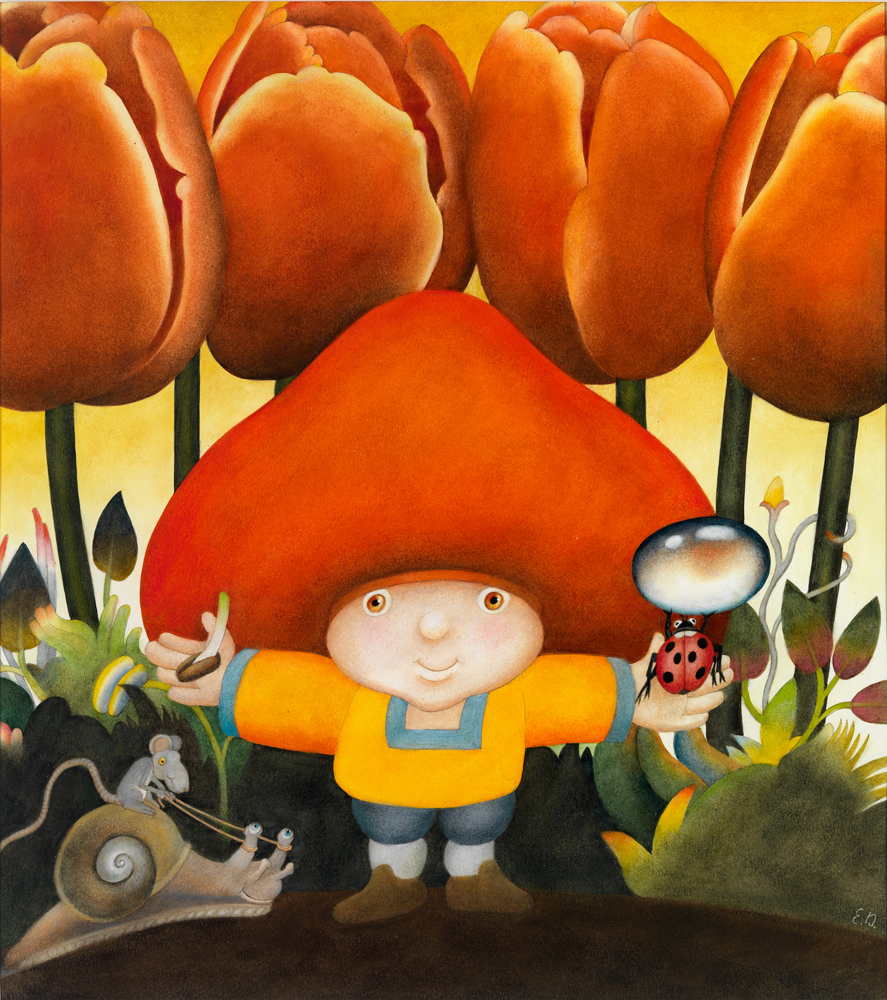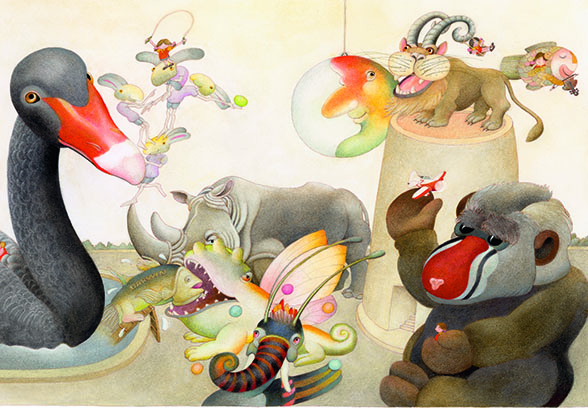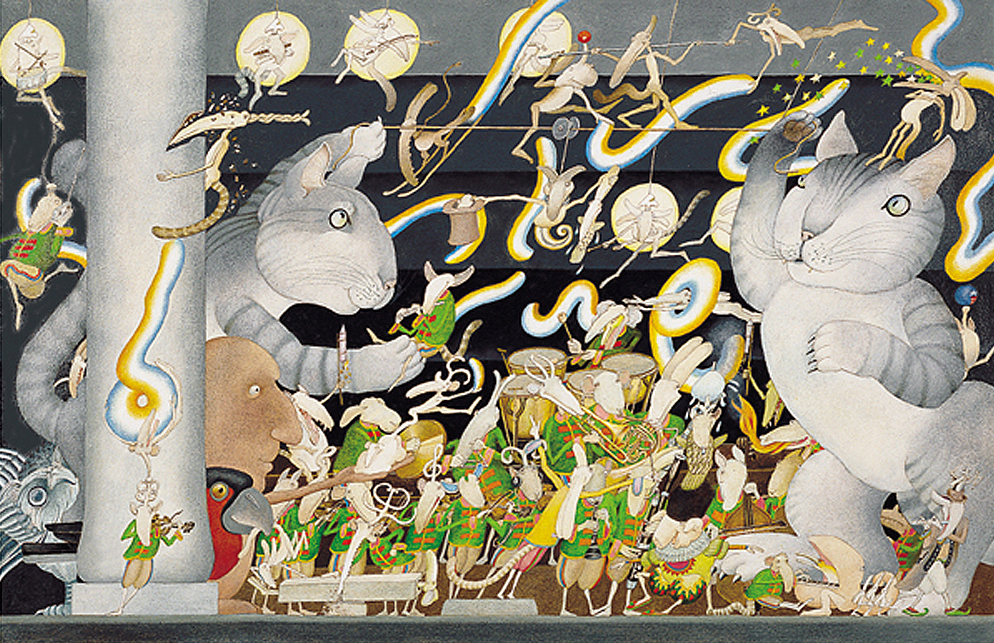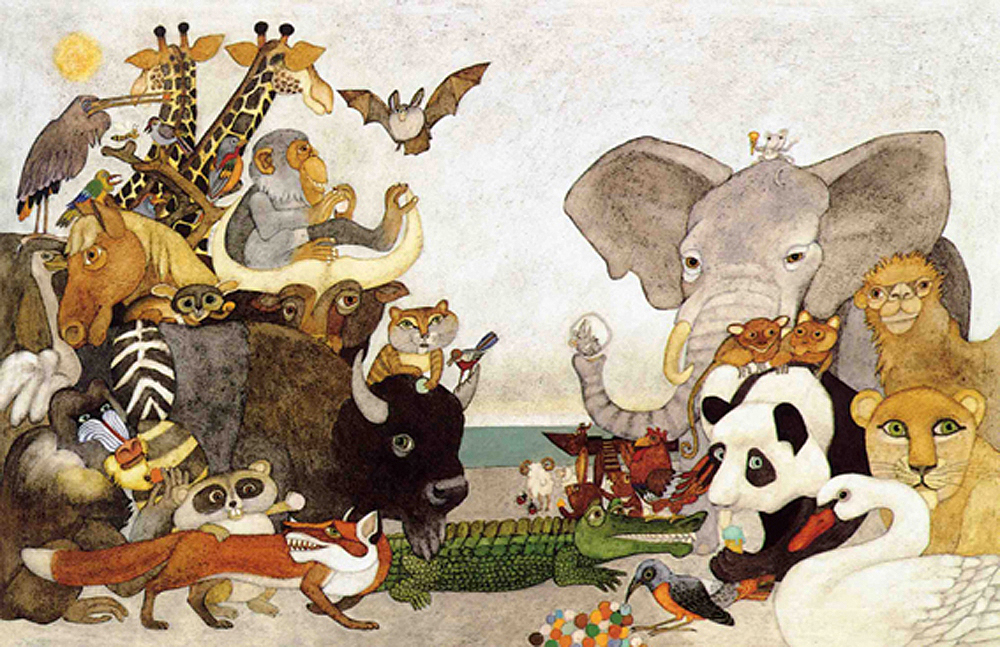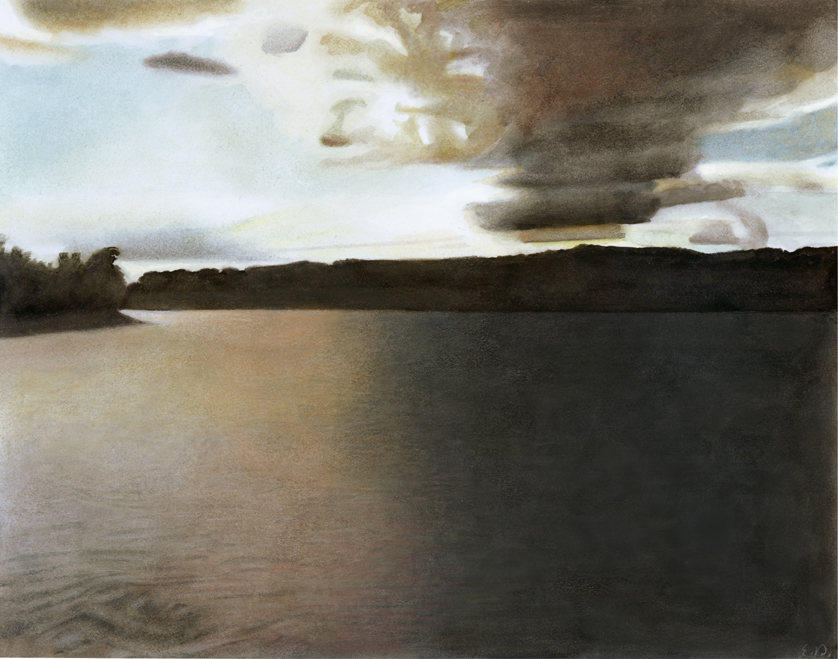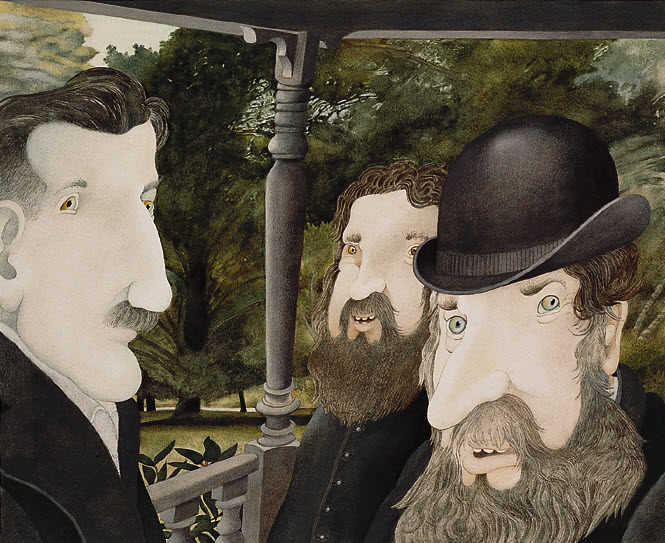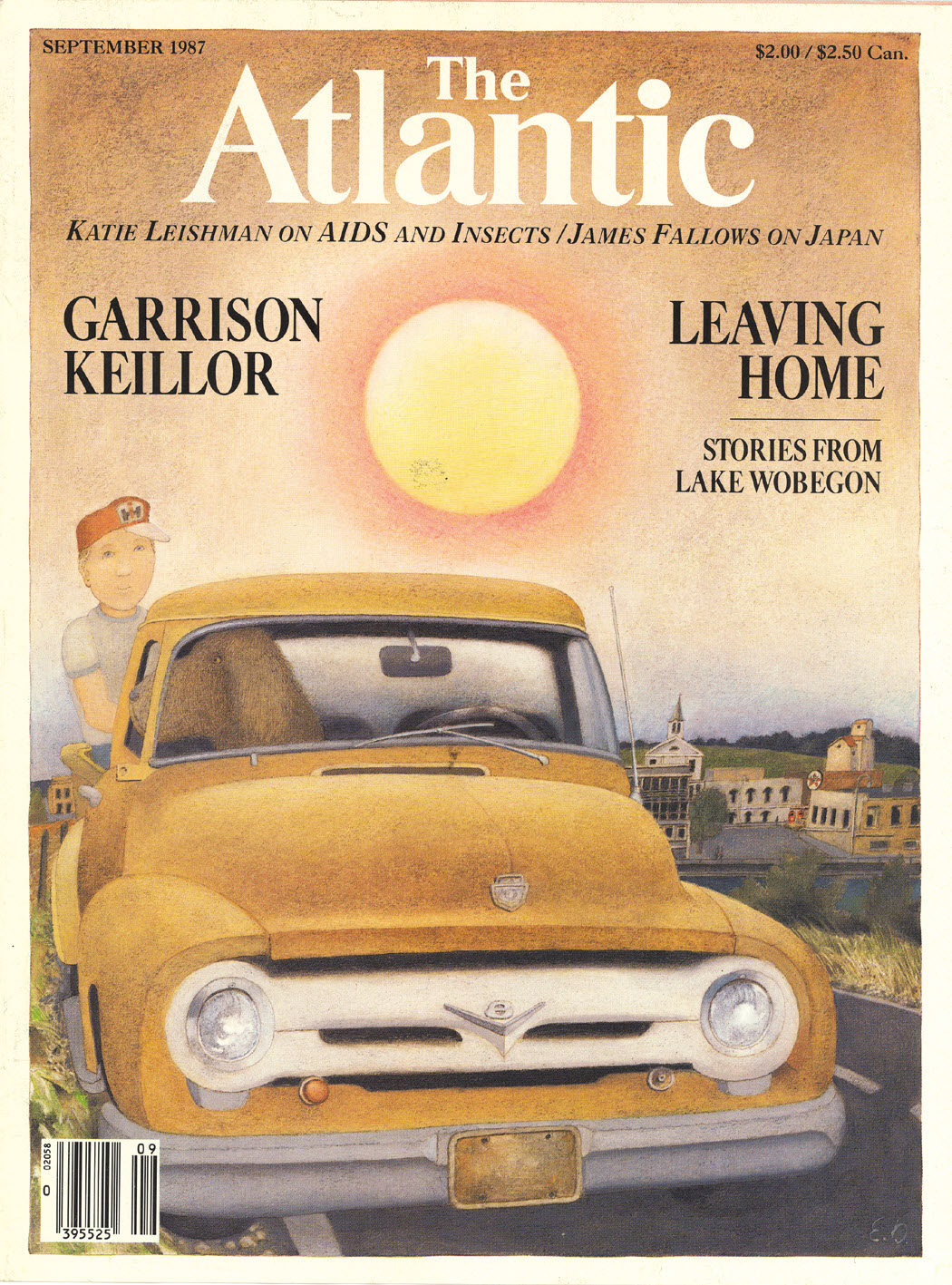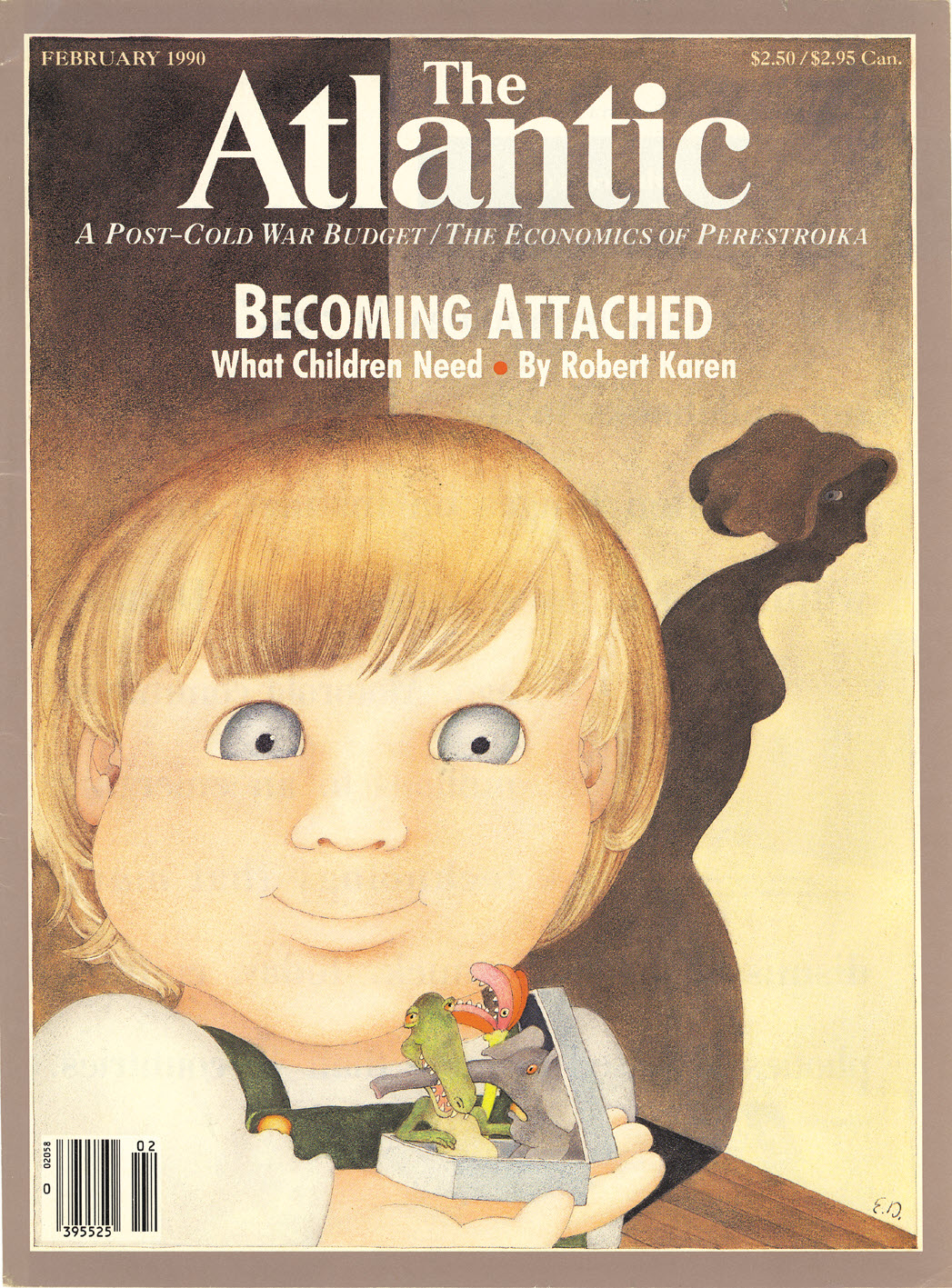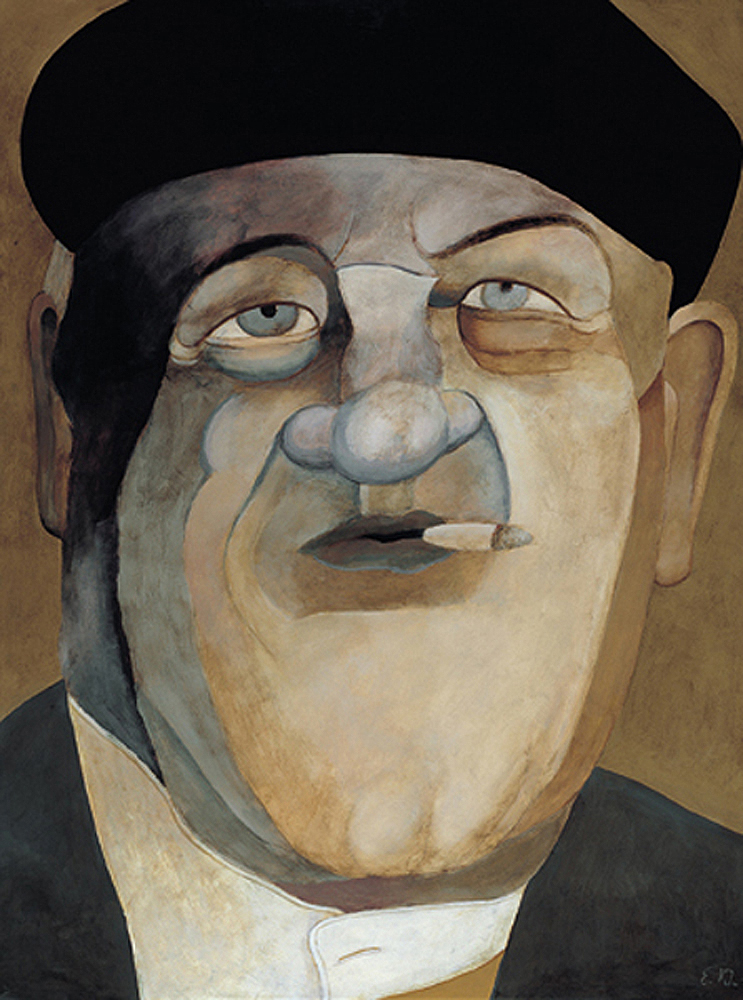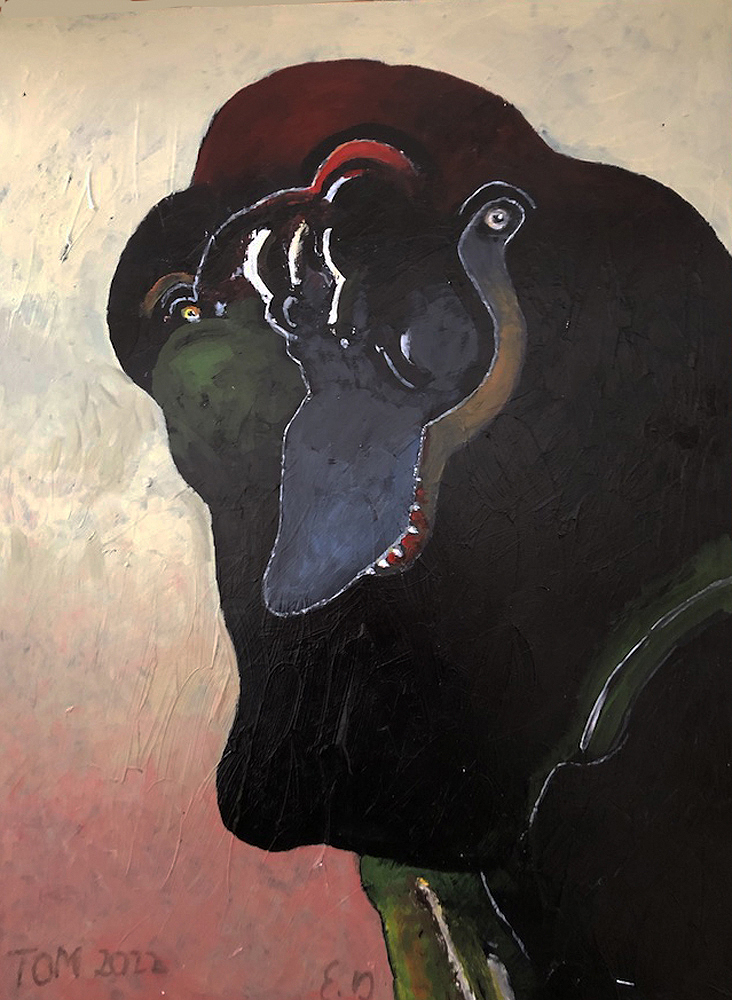Etienne Delessert
Video: Adrian Graf, Zürich & Julia Ann Stüssi, Zürich
Graphic Design: Ard.works (Guillaume Chuard), Lausanne / London
Music: Alors. Music for Visuals, London.
“I write pictures, and I paint ideas”
by Jacques Poget
The somewhat pithy quote from Etienne Delessert above is not intended to be paradoxical but rather a precise definition of his particular talent. Writing and drawing are usually so neatly separated from each other, even when produced by the same person. Dubuffet’s writings, for example, warrant close attention, as do Delessert’s. Writers of anything but pure poetry are chiefly concerned with intellect. Visual artists, with the exception of technical draughtspeople, are chiefly concerned with emotions.
What Delessert does is marry the two disciplines in a way that satisfies the definition of design according to both the French Larousse (“harmonising the human environment”) and the German Duden (“reconciling form and function”). This is reflected in his books and films for children, his illustrations for magazines and his posters, which have earned him a place among the “Maîtres de l’Imaginaire” (“Masters of the Imaginary” this is the name of the foundation he set up to preserve his peers’ works).
Imagination has been a central theme throughout Delessert’s life as he has sought to “transform reality”.
Whether writing and drawing the allegory or metaphor of his destiny in Ashes, Ashes, dreaming up a highly personal feature-length Magic Flute or drawing inspiration from the artist Saul Steinberg, the psychologist and logician Jean Piaget or the poet Maurice Chappaz, his sole aim is to transport us to a higher plane with greater freedom of thought and emotion. Whether advertising Evian mineral water, illustrating the disaster that befell the space shuttle Columbia for the New York Times, filming Yok-Yok or sending a mouse out into a world of discovery, he navigates ideas and emotions to come up with “the most fitting and most functional form”. Commercial product or intellectual exercise, children’s tale or portrait of an exceptional person – he does not see any as more valuable than the rest, and all his creations receive the same meticulous, bold attention.
The rich variety of a career spanning sixty years is astonishing. After focussing on the Classics in his school leaver’s exams, Delessert eschewed university in favour of a career in visual communication. He found a job at a graphic design agency and became a self-taught illustrator. His influences included Graphis magazine and 1960s poster art, which was dominated by such greats of German-speaking Switzerland as Herbert Leupin, Celestino Piatti and Armin Hofmann. This affinity for art that can be seen on the street and in the newspapers made him – very indirectly – a successor to those great pioneers.
He quit two jobs to venture further afield and keep learning. In Paris, he mastered colour, initially for advertising posters. Then he moved on to New York, home of Milton Glaser and his Push Pin Studios colleagues. Delessert absorbed a wide a range of influences. His style alludes to many, from Hieronymus Bosch (according to Eugène Ionesco) to his friend André François, but never imitates. He acknowledges his influences and respects his elders, contemporaries and the younger generation with a generosity that has given us the “Les Maîtres de l’Imaginaire” foundation for illustration, the website ricochet.org for children’s design and an exhibition in honour of Heinz Edelmann.
However, Delessert found his niche by listening to...himself. For the critic Françoise Jaunin, he cannot be ascribed “to any movement, although his paintings reveal the dark side of his work: an expressive and grotesque vein, the broad, timeless expressionism of all artists who convey their existential angst through bold gestures and the impulsive release of emotions. Delessert adds that whole phantasmagorical darkness that we find, in particular, in James Ensor’s work.”
Far removed from any school, Delessert himself took on the role of teacher, again indirectly, in his books and films for children. Following Sendak and Ungerer, colleagues he respected and admired, he blazed his own trail. It was perhaps his way of thinking that breathed new life into the genre even more than his visual expression. Of course, that expression left an impression on the young artists who worked with him at the Carabosse studio and the publishing firm Tournesol. Monique Félix, John Howe and many others passed through there and kept something of the spirit without ever imitating Delessert.
He is a rare example of the solitary artist who has, over the years, also led teams, been an entrepreneur, overseen workshops, launched publishing and production firms with dozens of titles to their name and published works by his own protégés. “He has given a whole generation the notion and the assurance that children’s books constitute a worthy artistic and literary genre in their own right,” stresses the expert Janine Kotwica.
Delessert seeks to think like a child
From the moment he arrived in Paris, where he made a living from innovative advertising, Delessert started to think about producing works aimed at children. One day, he realised that, like all authors, he believed that he was writing from the memory of the child he once was without really understanding how his audience thinks. One man who knew a lot about this subject was Jean Piaget, professor of experimental psychology and philosophy in Geneva. Delessert travelled from New York to Geneva to interview him and found the professor so responsive to his queries that he assigned his assistant, Odile Mosimann, to launch a research project along the artist’s concerns. Involving several dozen children, the study aimed to understand how children respond to stories written and illustrated by adults and how they write and illustrate their own stories. The picture book How the mouse was hit on the head by a stone and so discovered the world, a metaphor for the shock of birth, was a direct result of the findings of this research. Most importantly, the book was made possible by the researchers’ openness and ability to listen. The foreword by Piaget is an extremely rare example of scientific expertise and humility in the service of artistic endeavour.
Artistry with a spiritual trait; the agnostic Delessert frequently hints to the vertical axle of transcendency which structures many of his pictorial works. Even the natural world, both mineral and vegetable, shares two things in common with his creatures, be they animal, human, monster or angel: unpredictability and the mysterious power of the gaze – when we look at them, we get a strong feeling that they are looking back at us.
A sense of freedom and imagination pervades his works. Eugène Ionesco recognised it very early on, writing that “…Delessert discovers beauty, a sort of grandiose evolution of beings and objects in colour and through colour.”
« Quote »
Over the past six decades, Etienne Delessert has revolutionised graphic design through hundreds of imaginative works, from children’s books and films to illustrations, posters and paintings.
Jacques Poget is a journalist and columnist who has worked in daily newspapers, magazines, television and radio, as a correspondent in the US, Editor-in-Chief of L’Illustré and 24Heures and President of the Lausanne Literary Circle. He specialises in profile stories and hosting literary events.


